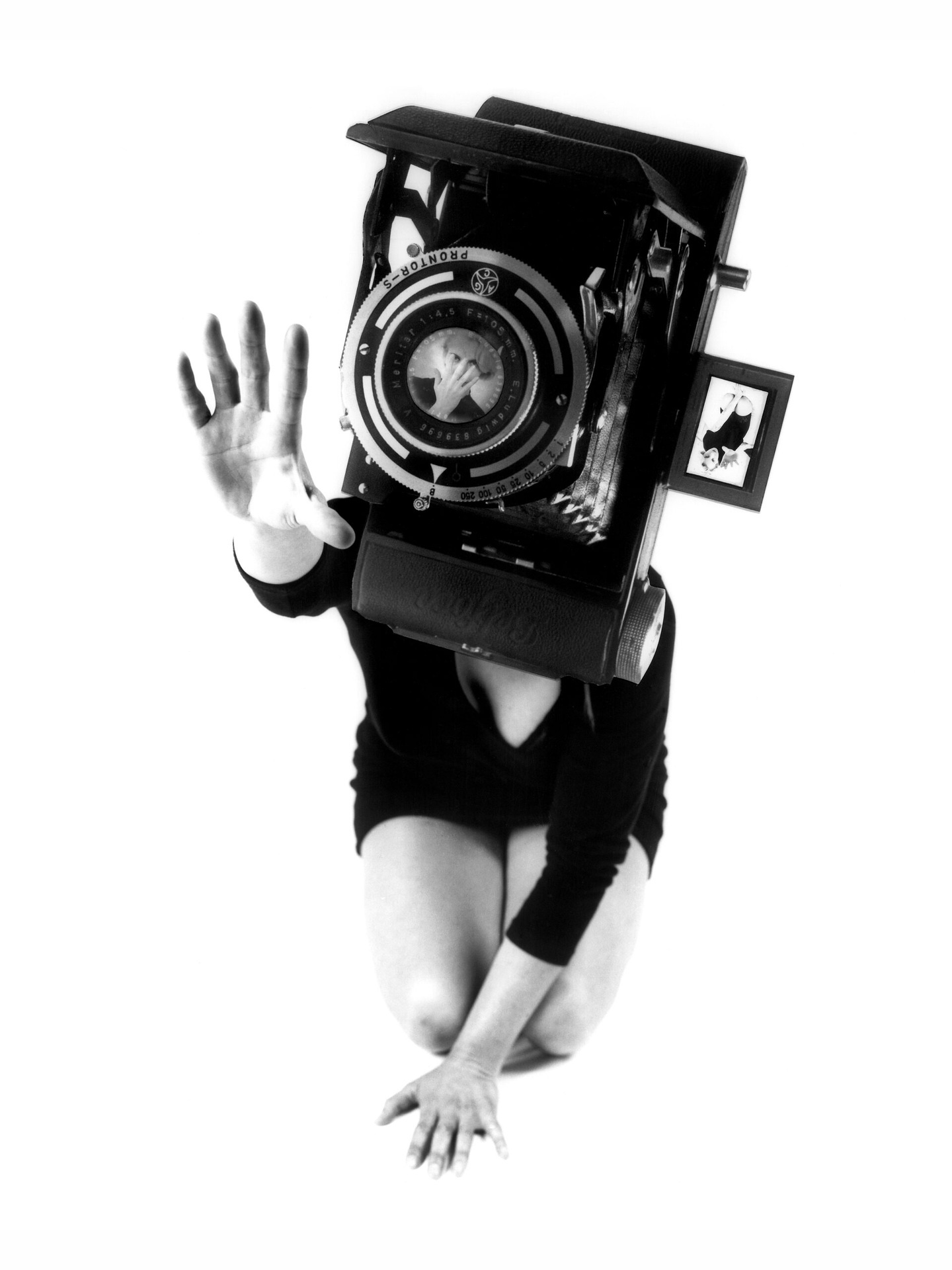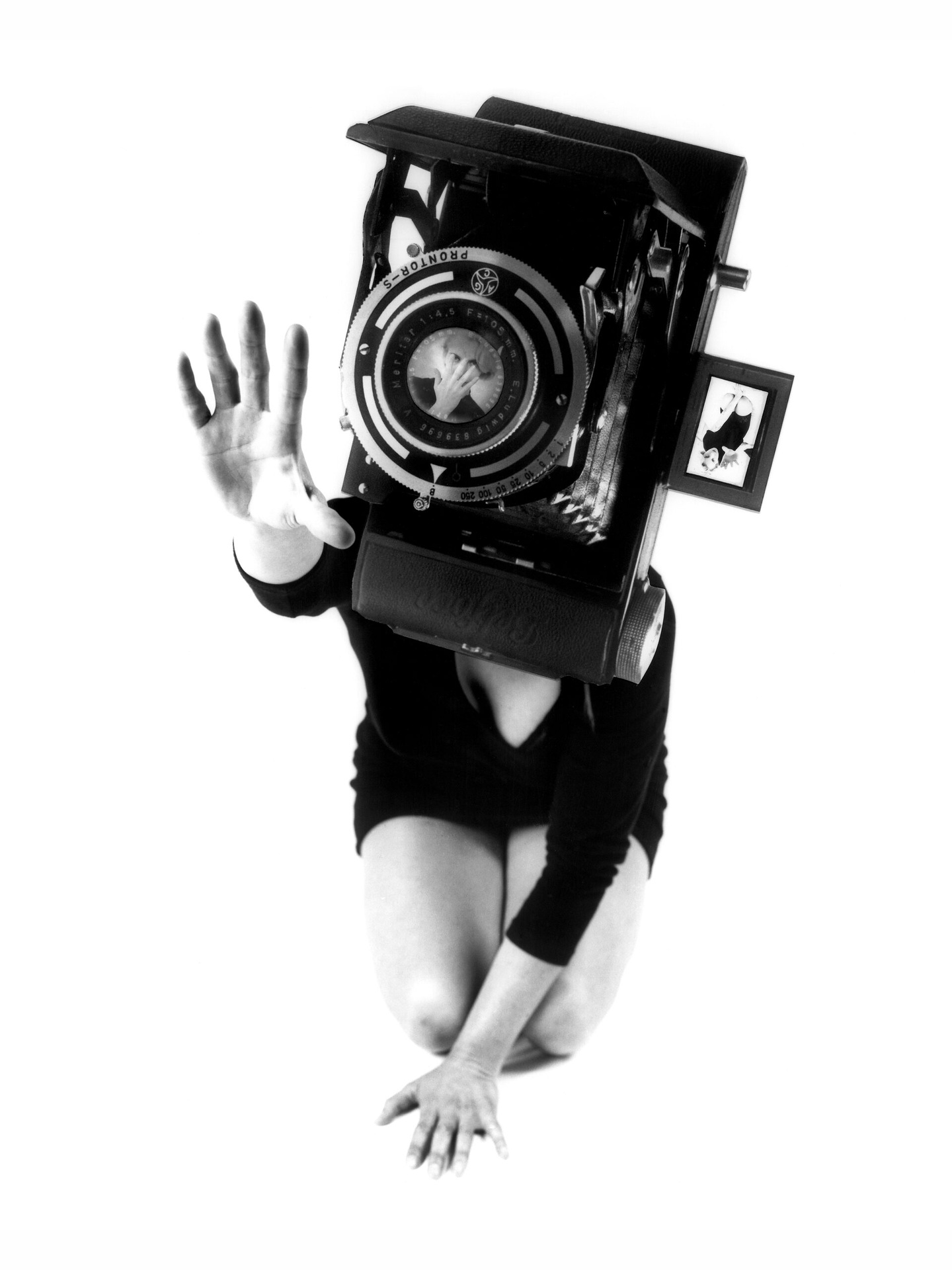- Artist/s
- Lynn Hershman Leeson
- Title
- Reach
- Year
- 1986
- Edition / Serial number
- 8
- Copy Number
- 3
- Category
- Photography
- Format
- Digital Print
- Black-and-white Photography
- Material / Technique
- digital print on cardboard
- Dimensions / Duration
- 135 x 101,5 cm
- Collection
- ZKM | Center for Art and Media Karlsruhe
- Description
- “Each [photograph of the series »Phantom Limbs«] articulates references to the mutation of the female body through the seduction of media. Reproductive technological parts sprout from the image of the female, creating a cyborgian reformation as parts of the real body disappear.” [1]
The pioneer of media art Lynn Hershman Leeson has been exploring the relationship between human and machine since the late 1960s. With her photo series »Phantom Limbs«, she specifically addresses the representation of women in media.
In the black-and-white photo collages, female bodies are merged with machinery. For example, cameras or televisions replace human body parts, creating a technologically mutated female body. In the photograph »Reach«, a folding camera from the 1930s replaces the head – in turn, a female person without mutation is visible in the camera’s viewfinder as well as in the objective lens. The pose is reminiscent of a stereotypical, provocative portrayal of women in fashion as well as advertising photography.
Long before the rise of idealized images produced by Photoshop, the artist addressed the perception of women with and through media. As an important representative of the feminist movement, she asks questions such as: Who or what is represented and what is not? To what extent do media representations shape our perception? What influence does the imaging technology have on our self-image?
[1] Lynn Hershman Leeson, “Romancing the Anti-Body: Lust and Longing in (Cyber)space,” [1993], in: Peter Weibel, ed.,»Lynn Hershman Leeson. Civic Radar« (Ostfildern: Hatje Catz, 2016), 367.
Author
Jenny

